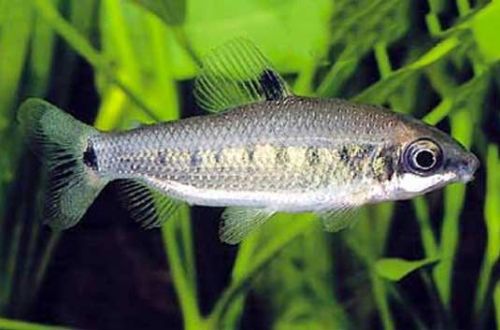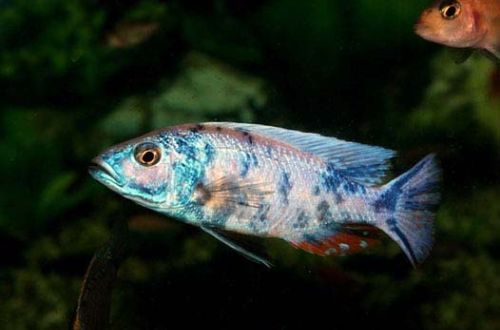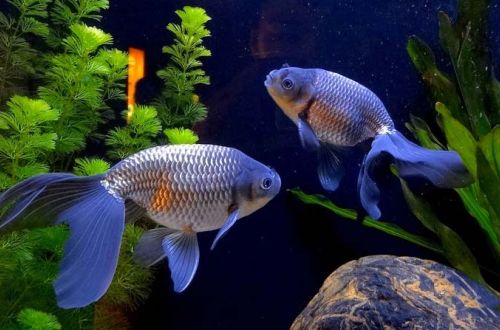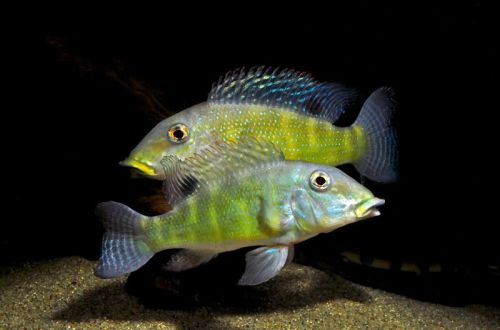
Shingu retroculus
Xingu retroculus, scientific name Retroculus xinguensis, belongs to the Cichlidae family. Not the most popular American cichlid, largely due to its nondescript coloration and living conditions (strong currents) that are unsuitable for many other freshwater fish. Recommended for species aquariums or biotopes.

txheem
Chaw Nyob
It originates from South America from the basin of the Xingu River and its left tributary, the Iriri, flowing through the territory of Brazil (the states of Para and Mato Grosso.). There are records that this species of cichlid has also been found in the Tapajos River basin. It occurs in sections of rivers with numerous rapids and fast, sometimes seething, currents. Such regions contain boulders of various sizes, sandy and rocky substrates.
Cov ntaub ntawv luv luv:
- Qhov ntim ntawm thoob dej yug ntses - los ntawm 700 litres.
- Kub - 26-32 ° C
- Tus nqi pH - 6.0-8.0
- Dej hardness - 1-12 dGH
- Substrate hom - xuab zeb, pob zeb
- Teeb pom kev - subdued
- Cov dej tsis huv - tsis muaj
- Dej txav - nruab nrab, muaj zog
- Qhov loj ntawm cov ntses yog 15-20 cm.
- Khoom noj - txhua yam khoom noj
- Temperament - conditionally peace
- Cov ntsiab lus hauv ib pawg tsawg kawg yog 5-8 tus neeg
Hauj lwm
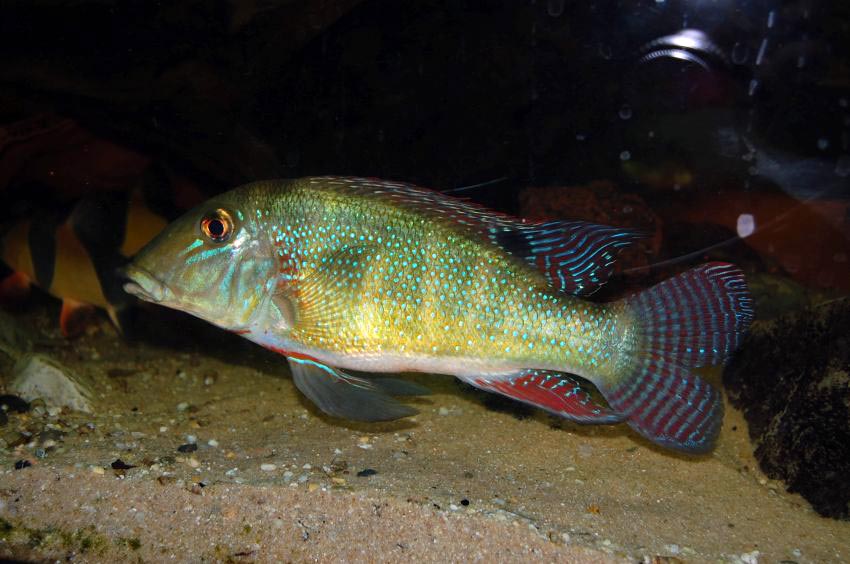
Adult males reach a length of up to 20 cm. Females are smaller – about 15 cm. Males also differ in the shape and color of the ventral and anal fins, they are more pointed and have red pigmentation, while in females they are rounded gray translucent. In fry and young fish, sexual dimorphism is weakly expressed.
Coloring consists of a combination of pale yellow, green and gray shades. Wide dark vertical stripes are noticeable on the body.
Khoom noj khoom haus
An omnivorous species, they feed mainly in the bottom layer, but they can easily grab food in the water column. The diet may consist of dry food in combination with live or frozen brine shrimp, daphnia, bloodworms, mosquito larvae, as well as small earthworms, etc. On occasion, small fish can be eaten.
It is important that the food contains herbal supplements, such as spirulina flakes. Feed small meals 3-5 times a day.
Kev tu thiab tu, kev npaj ntawm lub thoob dej yug ntses
The optimal size of the aquarium for a group of 5-8 fish starts from 700 liters. The decoration should resemble the natural habitat: boulders of variable size, driftwood, sand and gravel substrate. It is possible to add some unpretentious plants that can grow in conditions of moderate or strong current. Species rooting directly on rocks or woody bases are preferred. In some cases, additional pumps are required to create an internal flow, although efficient filters often cope with this task.
Xingu retroculuses are intolerant of the accumulation of organic waste and require high levels of oxygen dissolved in water. Successful keeping depends on providing stable water conditions without sudden changes in temperature and hydrochemical values. Also, dangerous concentrations of products of the nitrogen cycle (ammonia, nitrites, nitrates) should not be allowed to reach. Achieving ecological balance is achieved by installing the necessary equipment (filters, aerators, heaters, lighting system, etc.) and regular maintenance of the aquarium. The latter include weekly replacement of part of the water with fresh water, removal of organic waste in the form of food and experiment residues, equipment maintenance, etc.
Cwj Pwm thiab Compatibility
Relatively peaceful fish, but can be dangerous to very small species, and is not recommended to be combined with bottom-dwelling fish such as catfish and char. The choice of aquarium neighbors is also limited by the rather turbulent habitat of Retroculus Xingu. In addition, during the spawning period, the male becomes quite aggressive towards those who invade his territory.
It is recommended to maintain a group of at least 5-8 individuals of both sexes. With fewer numbers, dominant alpha males may chase weaker congeners.
Kev yug me nyuam
Under favorable conditions, fish are able to give offspring with an enviable frequency. With the onset of the mating season, the male and female form a temporary pair. Depending on the size of the group, there may be several such pairs. The couple occupies a site at the bottom of the aquarium and, after a short courtship, prepares a nest – a hole in the ground. The female lays up to 200 eggs with a sticky surface, on which grains of sand and various debris immediately stick, making it heavier and preventing it from drifting away with the flow. The incubation period lasts 3-4 days, after another week they begin to swim freely. All this time, parents protect the young, driving away from the nest all those who may be dangerous to them.
Ntses kab mob
Qhov laj thawj tseem ceeb ntawm cov kab mob yog nyob rau hauv cov xwm txheej ntawm kev kaw, yog tias lawv mus dhau qhov kev tso cai, tom qab ntawd kev tiv thaiv kev tiv thaiv inevitably tshwm sim thiab cov ntses yuav raug rau ntau yam kab mob uas tsis muaj nyob hauv ib puag ncig. Yog tias thawj qhov kev tsis txaus siab tshwm sim tias cov ntses muaj mob, thawj kauj ruam yog kuaj xyuas cov dej tsis zoo thiab muaj qhov txaus ntshai ntawm cov khoom siv nitrogen. Kev kho kom rov zoo li qub / tsim nyog feem ntau txhawb kev kho. Txawm li cas los xij, qee zaum, kev kho mob yog qhov tseem ceeb. Nyeem ntxiv txog cov tsos mob thiab kev kho mob hauv Aquarium Fish Diseases section.



